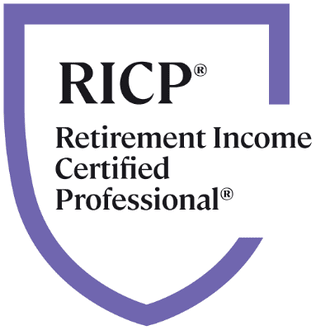
Four Penalty-Free Options for Withdrawing Money from Your 529 Plan
Introduction
529 plans offer families a tax-advantaged way to save for education expenses, but life doesn't always go as planned. Fortunately, there are several penalty-free options for withdrawing money from your 529 plan, including changing beneficiaries, using funds for student loan interest, rolling over to a Roth IRA, and leveraging scholarships. In this blog post, we'll explore these four options in detail and how they can help you make the most of your 529 plan.
-
Changing Beneficiaries: One of the most versatile options for withdrawing money from your 529 plan penalty-free is by changing beneficiaries. Here's how it works:
-
Qualified Family Members: You can change the beneficiary of your 529 plan to another qualified family member without incurring taxes or penalties. This includes siblings, cousins, parents, grandparents, and even in-laws.
-
Flexibility: Changing beneficiaries allows you to redirect the funds to another family member who may have educational expenses. Whether it's for a younger sibling, a niece or nephew, or even yourself, this option provides flexibility in how you use your 529 plan funds.
-
Process: Contact your plan administrator to request a beneficiary change form and provide the necessary information for both the current and new beneficiaries. There are generally no restrictions on how often you can change beneficiaries, giving you the flexibility to adapt to changing circumstances.
-
-
Using Funds for Student Loan Interest: The SECURE Act introduced a new provision that allows penalty-free withdrawals from 529 plans for qualified student loan repayments, including interest payments. Here's what you need to know:
-
Up to $10,000 per Beneficiary: You can withdraw up to $10,000 per beneficiary from your 529 plan to pay for qualified student loan interest. This provision applies to federal loans and certain private loans.
-
Tax Benefits: By using your 529 plan funds to pay for student loan interest, you can potentially save on taxes. While the withdrawal may be subject to federal income tax, it's exempt from the 10% penalty typically associated with non-qualified withdrawals.
-
Flexibility: This option provides flexibility for borrowers who want to use their 529 plan funds to alleviate student loan debt. It's a valuable tool for managing student loan payments while taking advantage of the tax benefits of a 529 plan.
-
-
Roth IRA Rollover: Under the Secure Act 2.0, if the account holder has had the 529 plan account for at least 15 years, distributions can be made into a Roth IRA for the owners' benefit:
-
Account Open for 15 Years: The 529 plan account must be open for at least 15 years, and you cannot contribute in the last five years to the plan.
-
Roll up to Annual Limit: You can roll over up to the annual limit for a Roth IRA, which is indexed for inflation. The maximum amount you can contribute to the Roth IRA is $35,000, not indexed for inflation. It will take approximately five to six years to roll the money into the Roth IRA if you have the maximum amount in the account.
-
Process: Tax-free rollovers take into account the regular rollover rules for a Roth IRA as a retirement account.
-
-
Leveraging Scholarships: If the beneficiary of your 529 plan receives a scholarship, you can withdraw funds from the plan penalty-free up to the amount of the scholarship. Here's how this option can work for you:
-
Penalty-Free Withdrawals: Scholarships provide a unique opportunity to access your 529 plan funds without penalties. You can withdraw up to the amount of the scholarship without incurring taxes or penalties.
-
Maximizing Savings: By using your 529 plan funds for other purposes when educational expenses are covered by scholarships, you can maximize your savings and potentially allocate the funds for other qualified expenses or future educational needs.
-
Flexibility: Scholarships offer flexibility in how you use your 529 plan funds. Whether it's for additional educational expenses, changing beneficiaries, or even non-educational purposes, you have the freedom to make decisions that align with your financial goals.
-
Conclusion
529 plans offer families a valuable tool for saving for education expenses, but they also provide flexibility for adapting to changing circumstances. By leveraging these four options, such as changing beneficiaries, using funds for student loan interest, leveraging scholarships, and Roth IRA rollovers, you can maximize the benefits of your 529 plan and achieve your educational savings goals. As always, it's essential to consult with a financial planner to ensure that you're making informed decisions based on your specific circumstances and goals. Contact me on the page below to learn more about penalty-free withdrawals from a 529 plan and how to maximize your college savings goals.
*This content is developed from sources believed to be providing accurate information. The information provided is not written or intended as tax or legal advice and may not be relied on to avoid any Federal Government tax penalties. Individuals are encouraged to seek advice from their own tax or legal counsel. Individuals involved in the estate planning process should work with an estate planning team, including their own personal legal or tax counsel. Neither the information presented nor any opinion expressed constitutes a representation of a specific investment or the purchase or sale of any securities. Asset allocation and diversification do not ensure a profit or protect against loss in declining markets.





